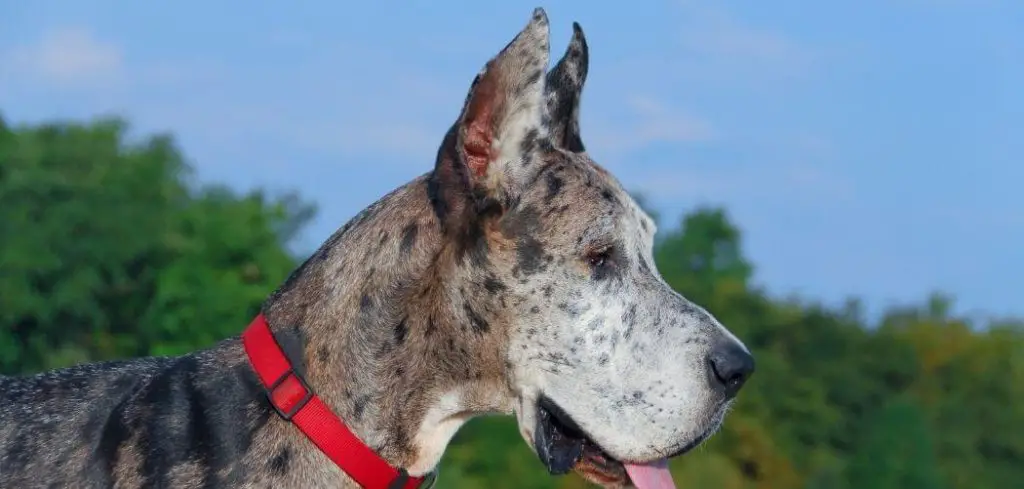Watching an older dog walk in repetitive circles can be alarming for any pet owner. This behavior may seem harmless at first, but it can indicate underlying medical or cognitive issues that require attention.
Understanding the potential causes and knowing when to act is essential for your senior dog’s well-being.
We outline the common causes of an old dog going in circles, what you can do at home, and when to seek veterinary help.
Old Dog Going in Circles — Why It Happens
Circling in older dogs is often a sign of neurological, cognitive, or physical changes. Conditions such as vestibular disorders, arthritis, or cognitive decline can make it difficult for an older dog to navigate their environment, leading to repetitive circling. Other causes may include ear infections, pain, or confusion associated with age-related changes in the brain.
Observing when and how often your dog circles can help determine whether it’s a benign habit or a symptom of a serious problem.

Old Dog Going in Circles: Common Causes
Vestibular Disease
Vestibular disease affects the inner ear and balance system of dogs.
This condition can make an old dog feel disoriented, causing them to walk in circles. Signs often include head tilt, nausea, or unsteady gait.
While sometimes temporary, vestibular disease can be severe, requiring veterinary evaluation to manage symptoms and prevent injury.
Read more: Old Dog Panting a Lot (Here’s Why)
Cognitive Dysfunction Syndrome (Canine Dementia)
Cognitive decline is common in senior dogs and can manifest as repetitive behaviors.
Circling, pacing, or aimless wandering may indicate canine dementia. Owners may also notice changes in sleep patterns, increased vocalization, or confusion in familiar environments.
Early intervention and structured routines can help improve quality of life and reduce disorientation.
Pain or Arthritis
Pain from arthritis or joint issues can affect how a dog moves.
An old dog experiencing discomfort may circle repeatedly before lying down or may become restless due to difficulty finding a comfortable position.
Signs include limping, stiffness, or reluctance to move. Addressing pain with veterinary-approved treatments can reduce circling and improve mobility.
Ear Infections or Neurological Issues
Inner ear infections and certain neurological conditions disrupt balance.
These problems can make a dog feel unsteady, prompting repetitive circling. Symptoms may include scratching at the ear, head shaking, or tilting the head to one side.
Untreated infections can lead to more severe complications, so prompt veterinary assessment is crucial.
Hypertension or Vision Impairment
High blood pressure or vision problems can alter spatial awareness.
Older dogs with vision loss or hypertension may circle as they try to orient themselves within a space. You may notice bumping into objects or difficulty navigating familiar rooms.
Maintaining a safe environment and addressing underlying conditions can prevent accidents and reduce stress.
Behavioral or Habitual Reasons
Some circling behavior may start as a harmless habit. Even without underlying medical issues, repetitive circling can become reinforced if it provides comfort or attention.
However, sudden onset or increased frequency is more likely linked to health problems and should be evaluated.
What to Do If Your Old Dog Is Walking in Circles
Monitor your dog closely and record when, how often, and in what situations circling occurs. This information can help your veterinarian identify patterns or triggers.
Ensure your home is safe, with obstacles removed and non-slip surfaces, to prevent falls and injuries during circling episodes.
Provide supportive care for senior dogs, including soft bedding, gentle exercise, and regular checkups to address age-related conditions.
Engage your dog with structured routines, mental stimulation, and consistent feeding and walking schedules, which can help reduce disorientation and stress.
If pain or discomfort is suspected, consult your veterinarian for appropriate treatments or interventions to improve mobility and comfort.
When to Call or Visit Your Vet
Seek veterinary attention if your old dog’s circling is sudden, frequent, or accompanied by other symptoms like vomiting, loss of balance, or head tilting.
Circling combined with weakness, disorientation, or confusion may indicate serious neurological or vestibular problems that require prompt evaluation.
Any signs of pain, reluctance to move, or changes in appetite, weight, or behavior should also be discussed with your veterinarian. Early detection and treatment can prevent complications and improve your dog’s quality of life.
Read more: Old Dog Peeing in House (Here’s why)
Key Takeaway
Circling in an older dog can stem from a range of causes, including vestibular disease, cognitive decline, pain, ear infections, or vision issues.
Careful observation, environmental safety, supportive care, and timely veterinary evaluation are essential to ensure your senior dog stays healthy and comfortable.
While some circling may be harmless, sudden or frequent episodes are often signs of underlying medical conditions.
By addressing both physical and cognitive health, you can help your older dog navigate daily life safely and maintain quality of life in their golden years.
